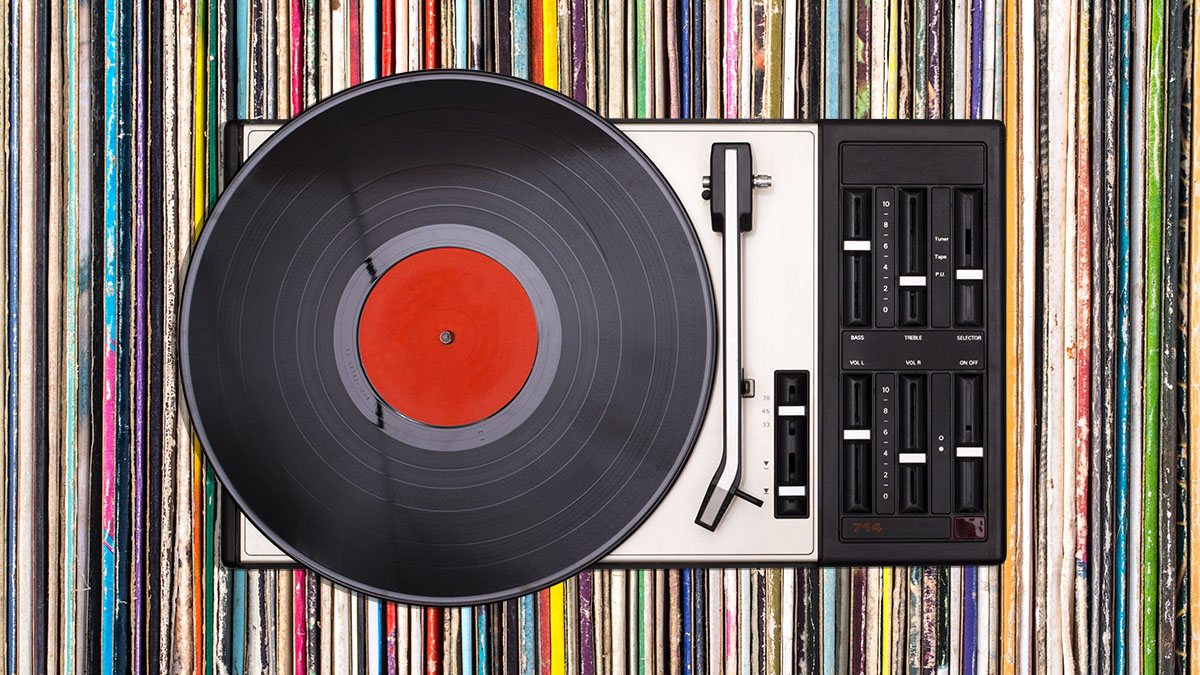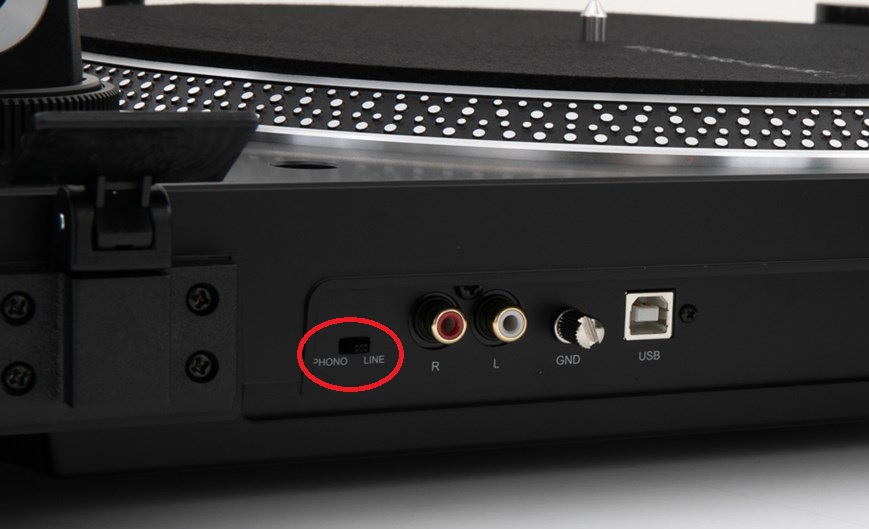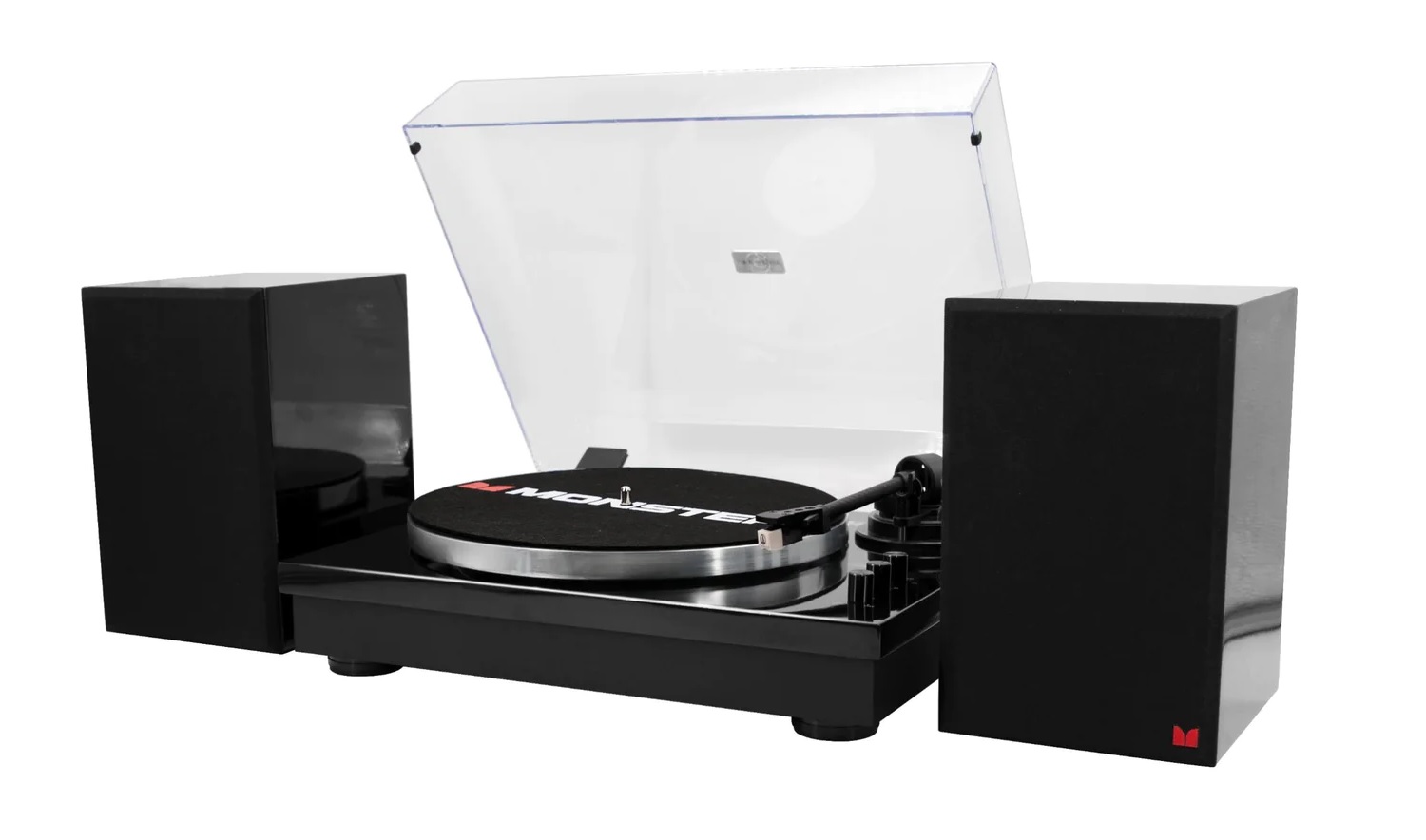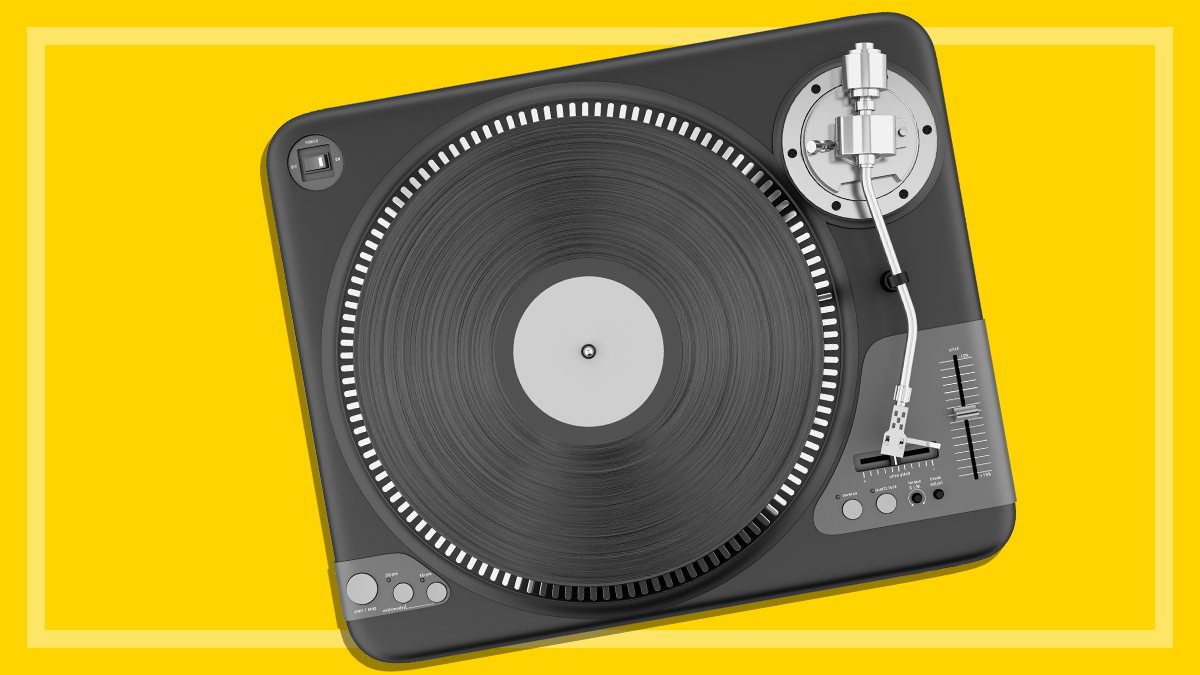Get our independent lab tests, expert reviews and honest advice.
How to buy the best turntable or record player

Turntables can appear simple on the surface but there’s a lot going on above and beneath the hood. While the turntable’s core design hasn’t really changed in the last few decades, little updates here and there mean the modern turntable is somewhat different to ones that you, or your parents, may have used back in the day.
On this page:
- Do I need a turntable or record player?
- What do turntables cost?
- Understanding core turntable components
- Other turntable functions and features
- Cleaning and caring for your records
- Ripping your records
- How to recycle your old record player
Getting your head around the bits and pieces that go into a record player is worth the effort, though, as you’ll be able to find a model best suited to your ears that you can then calibrate at home. This will also help you avoid the less reliable models have have proliferated the market since vinyl made a comeback.
Do I need a turntable or record player?
These terms are used interchangeably but technically there is a difference between a turntable and a record player. Functionality, however, is more or less the same.
A turntable or record player has a flat platter to hold the record and a drive motor to turn it at a certain speed. A stylus housed in a cartridge at the end of a tonearm is placed in the groove of the record, generating a low level electrical signal that goes through the stereo cables into an amplifier. The amp is connected to your speakers which produce sound.
So what’s the difference?
Turntable
A turntable can play your records but relies on external amplification and speakers to produce sound. In other words, you need to plug it into a hi-fi system to hear the music.
Record player
A record player has the pre-amp and amp, and sometimes even the speakers, all built into the one unit. This can be a handy solution as it gives you the option to plug speakers directly into the turntable. But built-in speakers almost never sound good and these units are best avoided.
What do turntables cost?
Decent sounding turntables with quality components start at around $500. But don’t be afraid to check out the aftermarket as there are a lot of used models on the market that can be grabbed for a bargain. Just remember to check the condition.
Understanding core turntable components
These are the things you need to understand to get the most out of your record player. They will help improve performance, sound quality and increase the lifespan of your records.
Cartridge
This holds the stylus and converts a record’s bumps and grooves into an electrical signal that gets passed on to the amplifiers. Moving magnet (MM) is the most common cartridge technology and will suit most consumers. Audiophiles may want to consider a higher quality moving coil (MC) model. You can swap the cartridge for a different unit on most turntables.
Speed
Turntables have two speed settings.
- 33 1/3rpm: standard playback speed for 12-inch records. Usually abbreviated to 33.
- 45rpm: standard playback speed for 7-inch singles and some audiophile 12-inch records.
A few models also include 78rpm support for old shellac records that predate vinyl. If you want to bust out some old, old, old school tunes you’ll need a shellac compatible stylus, as the material will destroy needles designed for vinyl.
Stylus
The little needle that drags across the record and sends kinetic energy to the cartridge. They come in two flavours; conical and elliptical. Elliptical is typically regarded as the superior option but will cost more. Look for a diamond tipped stylus as this material lasts longer.

Tonearm and counterweight
A long arm that holds the cartridge with a counterweight at the end to balance it in place on the record. Some tonearms are straight, others are curved and audiophiles love to put forward all sorts of arguments as to why one is better than the other. There’s no clear cut answer, both will likely sound fine to an average set of ears and almost all modern turntables use straight arms anyway.
Tracking force
This is the amount of weight that the cartridge puts on the record, adjusted by rotating the counterweight. Getting this right is crucial – too light and the stylus will skip, too heavy and it will sound bad and damage your records. The turntable or cartridge manufacturer provides a recommended tracking force in grams, as noted on the counterweight.
Anti-skate
Anti-skate counteracts the centrifugal force applied to the stylus to centre it in the groove. Adjusting this correctly is important, otherwise the music will sound unbalanced and distorted in the left or right speaker. The anti-skate dial is usually positioned to the right of the counterweight and should be set to match the tracking force.
These features are absent on some turntables which could be an issue depending on your needs. Manufacturers will calibrate tracking force and anti-skate before shipping the turntable but may not give you the option to adjust them. In this case, you need to hope that the manufacturer did a good job and fortunately, most do
However, you won’t be able to recalibrate the turntable if you decide to swap the cartridge for a different/higher-quality model. This means you’re stuck with the one supplied by the manufacturer which may not suit your ears. So, if you’re the kind of person that likes to replace parts then you need to buy a turntable with anti-skate and tracking force adjustment.
Pre-amp
Without getting too technical, a phono pre-amp simultaneously boosts the soft signal delivered by the cartridge and applies equalisation (called the RIAA curve). A pre-amp needs to be included somewhere along the line, and that could be a standalone unit, one in an amplifier or inside the turntable.
Record players with a built-in pre-amp are handy as it’s one less thing you need to worry about, and essential if you’re running the player directly into wired or wireless speakers. Models without a pre-amp need a standalone unit (which can be expensive) or an amplifier with a phono input. Your records will sound terrible without one. Some turntables let you turn off the pre-amp so you can use an external unit/amplifier if you prefer.
Amplifier
Different to a pre-amp, turntables with an amplifier can connect directly to wired or wireless speakers, depending on the model.

Other turntable functions and features
These are the other components that go into a turntable, as well as a few features that may or may not be included. Though this isn’t essential information like the core components, it’s still worth understanding so you know exactly what you’re buying.
Auto operation
This fully automates the moving of the tone arm including lowering and raising of the stylus.
AUX-in
If the turntable has a built-in amp, it may let you connect other devices for playback, via an auxiliary input.
Bluetooth-in
If the turntable has a built-in Bluetooth receiver, it may let you stream content from Bluetooth enabled devices such as smartphones, tablets and laptops. This can be useful if you have wired speakers connected to the turntable.
Damped cueing
Mechanically slows the lowering of the tonearm so the needle doesn’t slam into the records.
Drive type
Available in two options – belt driven or direct drive. Direct drive motors connect directly to the platter to improve rotational speed accuracy. But this can send light vibrations through the record which may impact sound quality.
Belt drive turntables isolate the motor by placing it to the side and rotate the platter with a rubber belt. This removes any risk of vibrations but can affect rotational accuracy, especially as the band wears down over time. You will need to replace it eventually but bands aren’t too expensive.
Feet
Feet help isolate the turntable from vibrations – e.g. when you’re walking around the room. This improves sound quality and stops the needle from skipping. Some can be adjusted which makes the turntable easier to level and calibrate. Most have three or four feet which, at a consumer grade level, are typically the same.
On/off switch
While some of the turntables have this feature, others automatically turn on/off as you lift/return the tonearm. A few high-end turntables can only be turned on or off from the main power.
Pitch stabilisation
This feature allows you to make slight adjustments in the speed.
Platter
This is where you put the record which connects to the motor. They’re available in a variety of materials that are all supposedly the best at accurate rotation and reducing vibrations etc etc. Broadly speaking though, heavier, more robust materials can be better at maintaining a constant playing speed and dampening unwanted noise, and are less susceptible to physical distortion over time.
Removable lid
Some enthusiasts believe that a turntable sounds better without a lid but it does protect the record from dust during playback.
Slipmat
Sits between the platter and the record, to stop the record slipping and being scratched by the platter as it spins. Usually made of rubber or felt. You can find tonnes of slipmat designs in stores and online which is an easy way to customise the look of your record player.

Speed change mechanism
Some models have a lever or push-button selection to alter the speed of the platter from 33 1/3rpm to 45rpm but other models require you to take the platter off and change the belt (shown as belt shift in the table) from one pulley to another which can be a hassle if you regularly move from one speed to another.
Stop/start
Fully automatic models will lift the tone arm when the user selects the on/off switch or button while models that are not fully automatic will simply have the platter stop.
Tone arm clamp
This holds the tone arm in position when you’re not using the turntable.
Do I need an amplifier and speakers?
So now that you understand everything from the stylus to speakers, it’s easy to figure out which additional hi-fi components you may need to buy. It really just depends on whether the turntable comes with a built-in amplifier and pre-amp.
It’s important to note that some external amplifiers come with a dedicated phono port. This port is a phono pre-amp, the same kind that you’ll find in some turntables or as a dedicated unit.
Either way, adding additional bits and pieces costs money and these need to be factored in if you’re setting up a hi-fi system from scratch. This can easily run you an extra $500 – $1000 depending on the route you decide to take.
My turntable has an amplifier and pre-amp
All you need is a pair of wired or wireless (if Bluetooth out is available) to plug directly into the turntable. However, you also have the option to connect to an external amplifier and pre-amp if you prefer. In this case, the easiest setup is:
Record player > speakers
My turntable has a pre-amp, but no amplifier
You’ll need an external amplifier of some kind that connects to your speakers. But the built-in pre-amp means you don’t need an amplifier with a phono port or an external pre-amp. Here, the easiest setup is:
Record player > amplifier > speakers
My turntable doesn’t have a pre-amp and amplifier
This requires the most investment as the turntable is essentially sending the electronic signal to other components for processing. You have the option to run the turntable into the phono port of an amplifier or via an external pre-amp followed by any port on the amplifier. The final setup takes one of two forms:
Record player > amplifier (phono port) > speakers OR record player > pre-amp > amplifier > speakers
Cleaning and caring for your records
Vinyl is a fragile format that requires a little more care and maintenance than CDs. You need to buy a basic cleaning kit that comes with an anti-static cloth, carbon fibre brush and stylus cleaner. This will help them last longer and sound better.
Dust builds up on records during playback which is why you need to run the brush over each side before and after playback, every time. This will pick up any grit and fluff that’s settled in the grooves to stop it collecting up on the needle.
Check the needle for dust build-up as well, otherwise music will start to sound muffled and distorted. To clean it, gentle run the brush across the tip of the needle, away from the end of the cartridge.
It’s also worth investing in vinyl cleaning solution which you can find at almost all hi-fi and record stores or online. A little spritz and gentle wipe on each side will give your records a deeper clean if they haven’t been played for a while. This is safe to apply right before playback.
Mould and stubborn gunk
Mould and sticky goo are difficult to remove and degrade vinyl. If you see either of these things, remove them immediately – particularly mould as it can spread to other records. These will need a firmer scrub with your cleaning solution or a run through a record cleaner. But don’t scrub too hard or you’ll damage the grooves.
A basic record cleaner will set you back a few hundred dollars but may be worth if you have a large collection that hasn’t been played in a while. Otherwise there are plenty of cleaning services around.

Basic vinyl care
In addition to cleaning, there are a few things you can do to protect your records:
- Keep them away from moisture. Damp environments encourage mould and can warp the cardboard sleeves.
- Store them vertically. Stacking records essentially crushes the ones at the bottom of the pile.
- Hold them by the sides, with your fingertips or palms. Don’t grab the records with your whole hand as this can rub dirt and oils into the grooves.
- Ensure your shelves are robust. A sizeable record collection can get very heavy and poorly made shelves can collapse and permanently damage or even destroy your records.
Ripping your records
Vinyl may be your preferred listening format but lets be honest, digital audio can be pretty darn convenient. That’s why you can find plenty of record players with built-in ripping (aka format shifting) tools. They output the audio in formats such as mp3, WAV or FLAC direct to a USB drive that plugs into the front, back or side.
Records are converted in real time which means a 45 minute album, for example, will take 45 minutes to rip. Most also output a single file per side so you’ll need to spend some time cutting it up into individual tracks using basic audio editing software, such as Audacity.
Some try to do this for you with a feature called ‘track detection’ but they tend to be off by a few seconds. If you have the time, other applications let you separate tracks in real time, which requires you to sit next to the record player and press a button when each songs ends.
Whether or not this is worth it depends on availability and the number of records you want to rip. Pretty much every artist under the sun is now on one of the major streaming services such as Spotify, Tidal or Apple Music. But some are still absent, particularly older albums/singles and classical or jazz standards that have been recorded by dozens or artists over the years. If you have a particularly rare recording that isn’t on streaming, then ripping may be worth the effort.
Ripping without a USB turntable
If want to rip some tracks but your turntable of choice doesn’t include these features, don’t stress. You can still convert your records though the process is somewhat involved. That’s why we’ve written a step by step guide that you can check out at the link below.
How to recycle your old record player
A good quality turntable, if properly taken care of, will last a long time. We’ve been using the same Technics SL-1200MK2 since the 1980s and it still runs just fine. So, it’s unlikely that your turntable will break down any time soon.
Some parts, like the band on a belt driven turntable and the stylus, do wear down over time, but replacements are easy to find that you can fit at home. If not, there are plenty of hi-fi repair centres that can take a look at your turntable, now that vinyl is more or less mainstream again.
But if your record player is really ready for retirement, or you’re looking to upgrade to a nicer model, there are a few things you can do with your old one. Just remember to remove and keep any upgraded parts you may have added, such as a higher-quality cartridge.
Donate or sell it
Vinyl is trendy but players are expensive. You can easily help get a budding record enthusiast into the field by donating your turntable to a local charity or selling it online for a low price. Most Salvos, and some Vinnies, will take them but the Red Cross doesn’t accept electrical goods.
The vintage market is also thriving so you won’t have trouble finding stores or enthusiasts that are happy to buy broken units to repair and sell. They may even be happy to buy your old turntable for parts. Just don’t expect a big pay day in either case.
Recycle it
Tables that no longer turn are destined for e-cycling services. Here, you have a few options.
Start with the Recycling Near You database. It’ll show you where to find e-waste services in your area which you can contact to see if they’ll take your turntable. Ecoactiv is another alternative. Just enter your details and the items you’d like to recycle, and a staff member will get in touch.
It’s also worth heading to your local council website or giving them a call. Most are likely to take turntables and hi-fi accessories during e-waste drop-off events that happen throughout the year. For example, the Inner West council in NSW (where CHOICE is located) accepts entertainment appliances.






